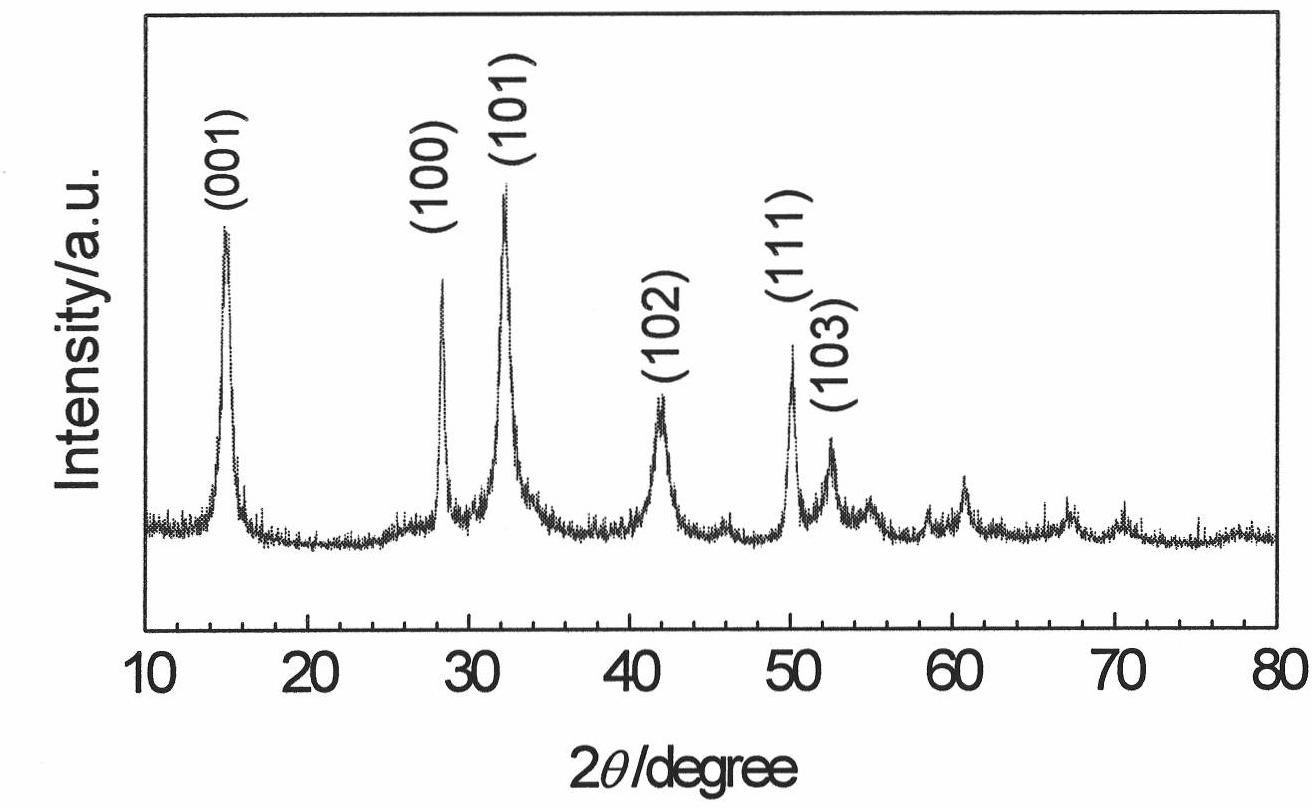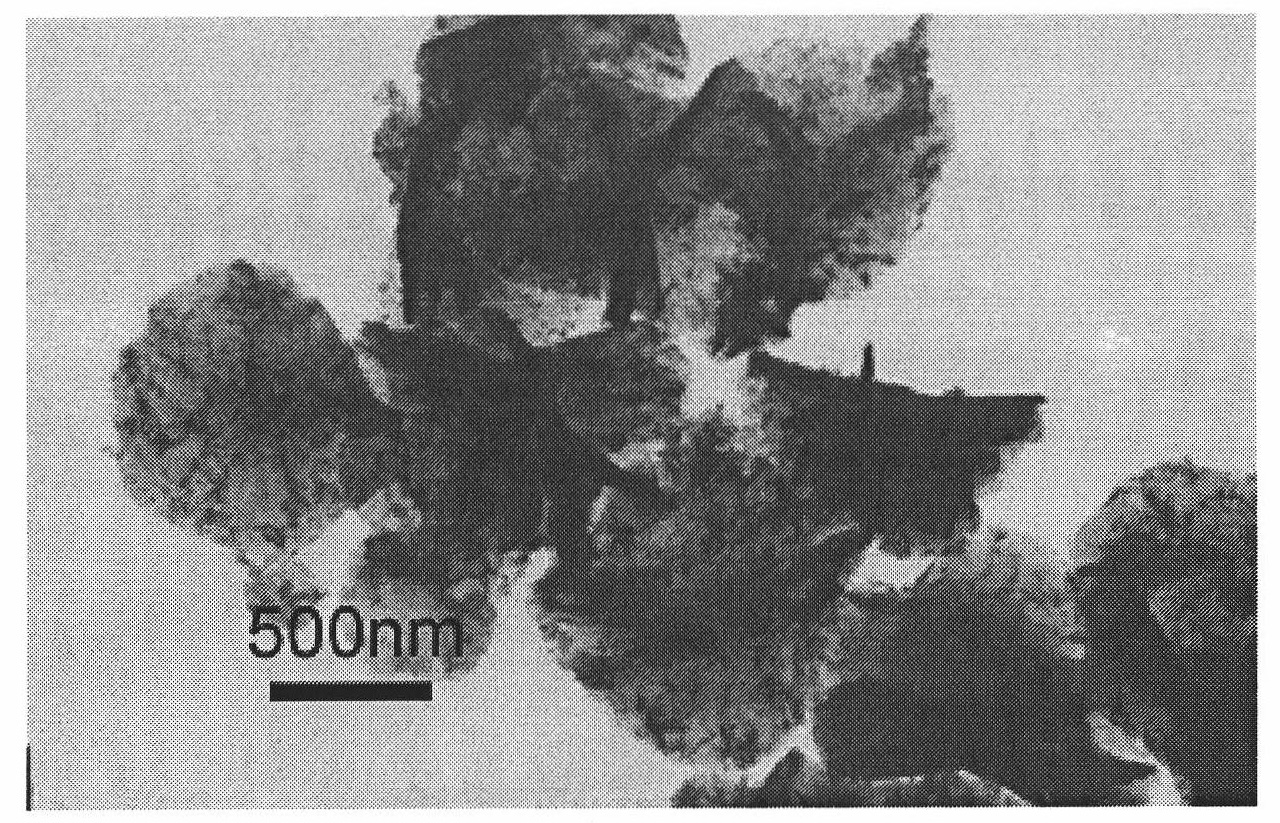Preparation method of SnS2 nanoplate anode material of a lithium-ion battery
A technology for lithium-ion batteries and negative electrode materials, applied in electrode manufacturing, battery electrodes, circuits, etc., to achieve high electrochemical lithium storage capacity, excellent electrochemical lithium storage performance, and good cycle stability
Inactive Publication Date: 2011-01-05
ZHEJIANG UNIV
View PDF0 Cites 0 Cited by
- Summary
- Abstract
- Description
- Claims
- Application Information
AI Technical Summary
Problems solved by technology
Method used
the structure of the environmentally friendly knitted fabric provided by the present invention; figure 2 Flow chart of the yarn wrapping machine for environmentally friendly knitted fabrics and storage devices; image 3 Is the parameter map of the yarn covering machine
View moreImage
Smart Image Click on the blue labels to locate them in the text.
Smart ImageViewing Examples
Examples
Experimental program
Comparison scheme
Effect test
Embodiment 1
Embodiment 2
Embodiment 3
the structure of the environmentally friendly knitted fabric provided by the present invention; figure 2 Flow chart of the yarn wrapping machine for environmentally friendly knitted fabrics and storage devices; image 3 Is the parameter map of the yarn covering machine
Login to View More PUM
 Login to View More
Login to View More Abstract
The invention discloses a preparation method of SnS2 nanoplate anode material of a lithium-ion battery, comprising the following steps: dissolving L-cysteine in deionized water, then adding stannic chloride and fully stirring the solution to dissolve the stannic chloride; transferring the mixed solution in a reaction kettle with a polytetrafluoroethylene tank to react hydrothermal reaction at 180-220 DEG C for 8-12h, then cooling to the room temperature, centrifugalizing the products to obtain precipitate, cleaning and drying the precipitate fully to obtain the SnS2 nanoplate anode material of a lithium-ion battery; wherein, the molar ratio of L-cysteine to stannic chloride is 4:1-8:1. The SnS2 nanoplate anode material of a lithium-ion battery prepared by the method of the invention has high electrochemical capacity and good cyclic stability.
Description
A kind of preparation method of lithium-ion battery SnS2 nano sheet negative electrode material technical field The invention relates to a preparation method of lithium-ion battery electrode materials, in particular to a preparation method of lithium-ion battery SnS2 nanosheet negative electrode materials, and belongs to the technical fields of inorganic material synthesis and new energy. Background technique Lithium-ion batteries have excellent properties such as high specific energy, no memory effect, and environmental friendliness, and have been widely used in portable mobile appliances such as mobile phones and notebook computers. As a power battery, lithium-ion batteries also have broad application prospects in electric bicycles and electric vehicles. At present, graphite materials (such as: graphite microspheres, natural modified graphite and artificial graphite, etc.) are mainly used as negative electrode materials for lithium-ion batteries. These graphite materials...
Claims
the structure of the environmentally friendly knitted fabric provided by the present invention; figure 2 Flow chart of the yarn wrapping machine for environmentally friendly knitted fabrics and storage devices; image 3 Is the parameter map of the yarn covering machine
Login to View More Application Information
Patent Timeline
 Login to View More
Login to View More Patent Type & Authority Patents(China)
IPC IPC(8): H01M4/04H01M4/58
CPCY02E60/12Y02E60/10
Inventor 李辉陈卫祥常焜赵杰
Owner ZHEJIANG UNIV
Features
- R&D
- Intellectual Property
- Life Sciences
- Materials
- Tech Scout
Why Patsnap Eureka
- Unparalleled Data Quality
- Higher Quality Content
- 60% Fewer Hallucinations
Social media
Patsnap Eureka Blog
Learn More Browse by: Latest US Patents, China's latest patents, Technical Efficacy Thesaurus, Application Domain, Technology Topic, Popular Technical Reports.
© 2025 PatSnap. All rights reserved.Legal|Privacy policy|Modern Slavery Act Transparency Statement|Sitemap|About US| Contact US: help@patsnap.com



